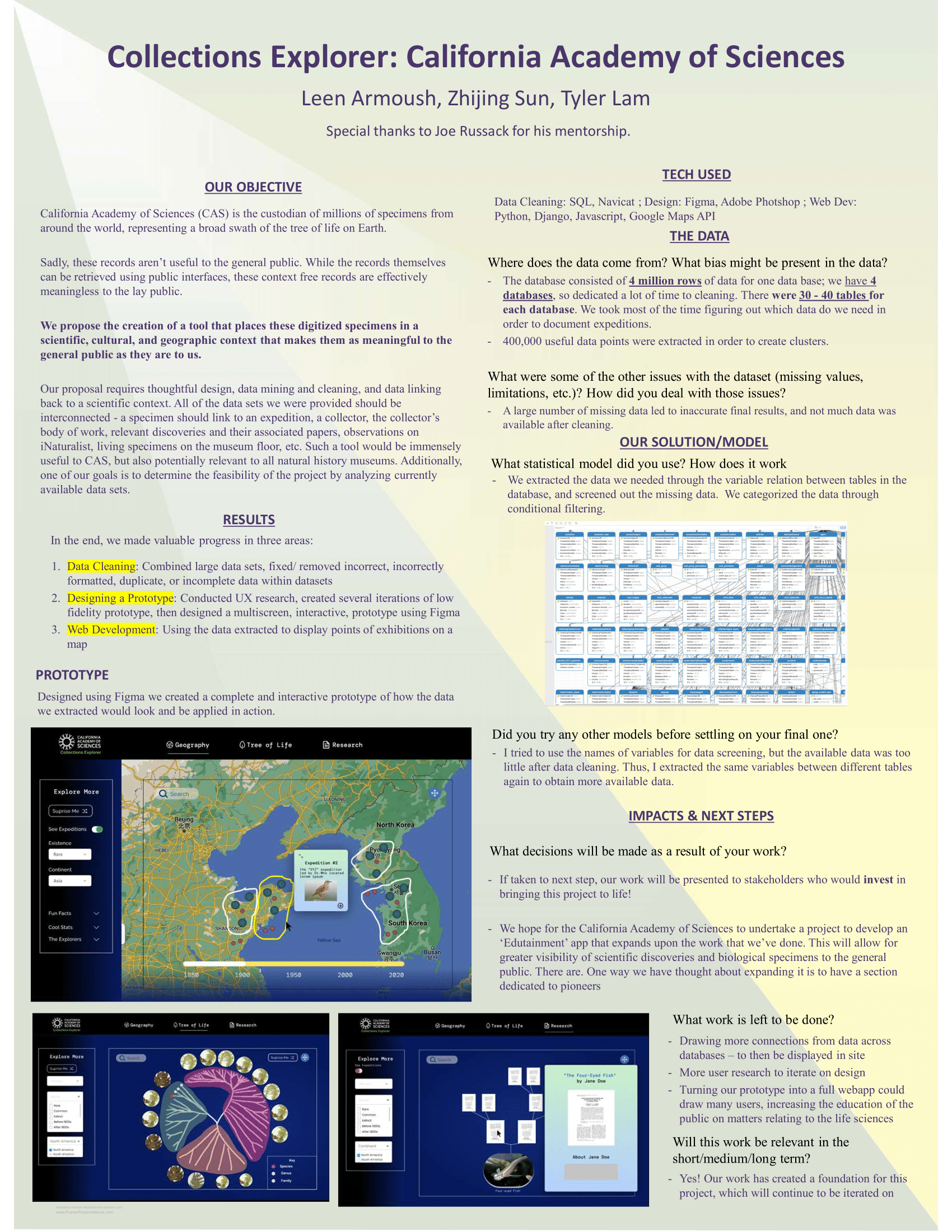Like all natural history museums, the California Academy of Sciences (CAS) is the custodian of millions of specimens from around the world, representing a broad swath of the tree of life on Earth. These specimens are the basis of collections-based research performed by both our researchers and by visiting scientists. These specimens - estimates vary from 20 to 40 some million - are only partially databased (the percentage varies by collection, but we’re overall between 5-10%) and even more sparsely imaged (no more than 5%, depending on the collection).
Sadly, these records aren’t useful to the general public. While the records themselves can be retrieved using public interfaces (here and here, for example - provided you know the scientific name), these context free records are effectively meaningless to the lay public.
We propose the creation of a tool that places these digitized specimens in a scientific, cultural, and geographic context that makes them as meaningful to the general public as they are to us. This will require thoughtful presentation, but also involve data mining, context linking, data cleaning, and links back to a scientific context that is made relevant by this presentation. All of these data sets should be interconnected - a specimen should link to an expedition, a collector, the collector’s body of work, relevant discoveries and their associated papers, observations on iNaturalist, living specimens on the museum floor, etc. Such a tool would be immensely useful to CAS, but also potentially relevant to all natural history museums. Moreover, at most institutions, collections infrastructural funding has decreased over the past decade, in no small part because of a lack of awareness that, ideally, this tool could help mitigate.
Full doc here: https://docs.google.com/document/d/1Y37HexEwbJidDqHOeHc-MN38oMqcwp1rKR0cEzRmgJw/edit#heading=h.g2mc4c3uxxca

